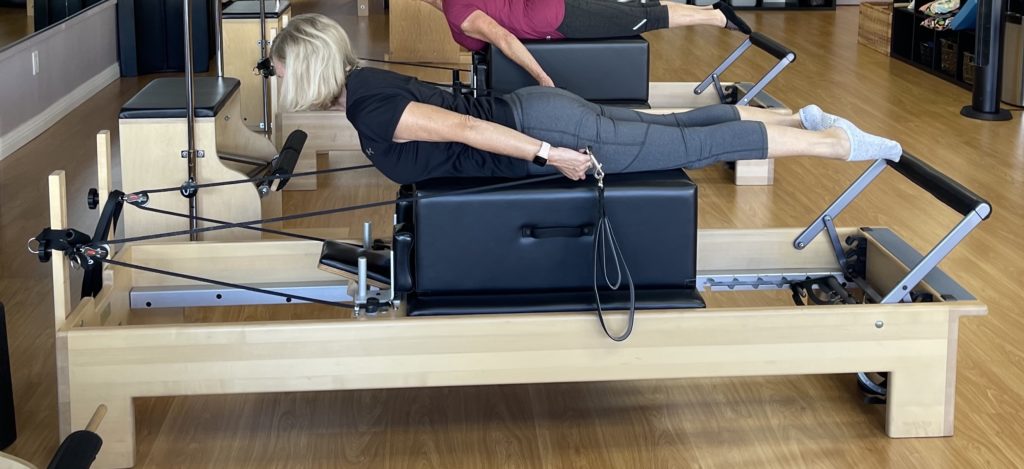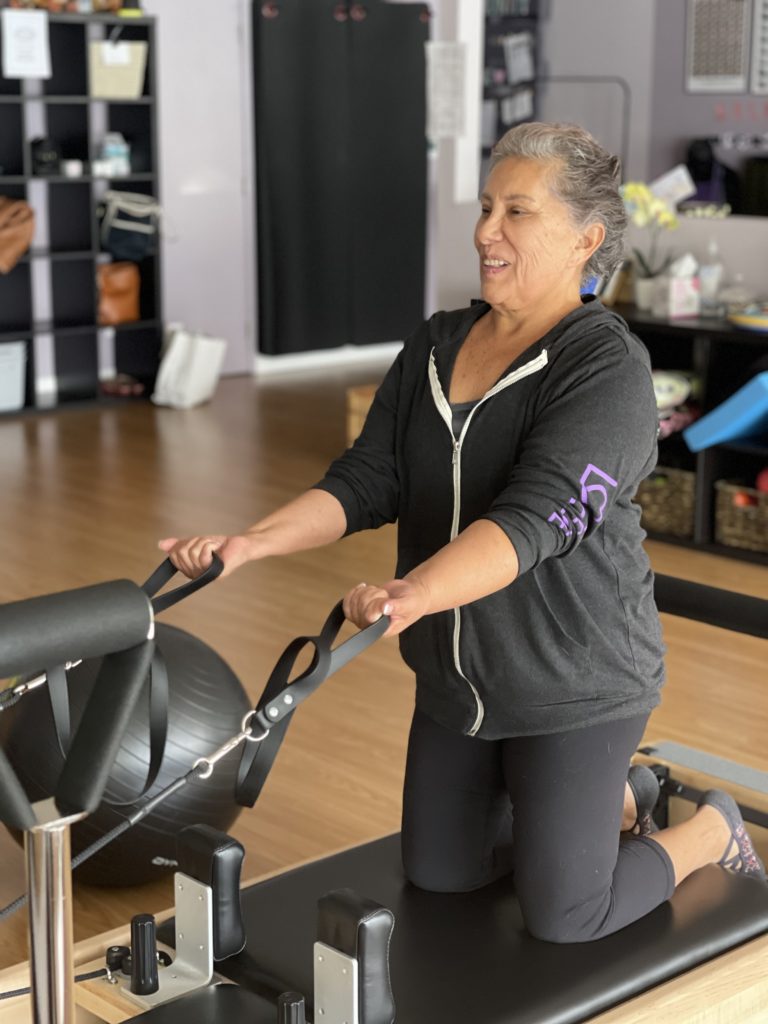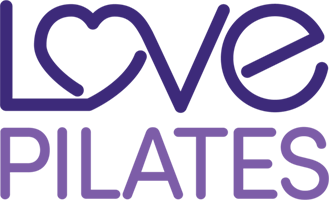Have you been diagnosed with low bone density, or Osteoporosis?
Osteoporosis is a common diagnosis as we age. Infact, 25% of women and 6% of men 50 and older in the US are diagnosed with Osteoporosis. This happens for several reasons, among them, diet, exercise, and heredity.
Is Osteoporosis painful?
Osteoporosis has no symptoms, until something goes wrong. Osteoporosis is called a “silent disease” because you can’t feel it happening. Low bone density does not hurt until a bone fractures. Osteoporosis affects the entire skeleton, but main areas are the spine, hip bones, and wrists. At Love Pilates we want to take precautions and make the recommended modifications for clients with low bone density. We want to help you work out and strengthen in a way that supports your bones without risking fracture.
Can I increase my bone density?
Yes! The good news is bone density can be improved through daily exercise and getting enough calcium and vitamin D through diet or supplements. Depending on the severity, medication may be prescribed. Talk to your doctor and be sure to ask for a bone density scan.
Is Pilates safe for people with Osteoporosis?
Yes! Pilates is wonderful for its adaptability. Pilates exercises can be modified for safety for clients with low bone density, and you’ll still get a great workout. Be sure to check with your doctor* and ask about contraindications before beginning a Pilates practice, or if you’ve received a new diagnosis.
*This applies to any health condition you may be working with.
So, what exercises can I do in Pilates class, and what should I avoid?
If you’re brand new to Pilates, the best place to start is with a private lesson package. You’ll get one on one attention so that you can learn how to exercise safely and effectively for your body’s needs. If you’re a returning client, you’ve most likely heard this before, but as a refresher, here are some contraindications.
No forward flexion!
Great news! No “crunches!” Why? Because of the wedge shape of the vertebrae, forward flexion puts pressure on the front of the vertebrae. This can cause fracture in the presence of low bone density. Avoid forward flexion by keeping your head on the head rest. Avoid other flexion exercises like rollover, short spine, roll-up, roll down, etc. Also avoid lateral flexion with rotation (like mermaid with a “twist.”) These exercises also put pressure on the vertebrae.
Do these exercises instead to strengthen and build better posture.
Footwork on the reformer (this is a great chance to decompress and elongate while working your legs.)
Bridging (great for strengthening the muscles that support and move the spine)
Ab series with head down (supine arm series, 100, etc.)
Ab series on the mat (single leg stretch, double leg stretch, toe taps or “marching”, heels lowering, supine spine twist – keep it small and controlled!)
Leg circles on the reformer or on the mat with a theraband
Seated or kneeling arm series (GREAT for posture!)
Swan on the mat or reformer (also GREAT for postural strength)
Mermaid on the mat for reformer (omitting the twist)
Eve’s lunge on the reformer (or hip flexor/hamstring stretch done another way)
How about those wrists?
So many of us don’t enjoy weight bearing on our wrists, but it’s the best way to build strength in the wrists. Joseph Pilates ended his mat routine with… push ups! Every mat routine ended with three sets of three push ups, that’s just 9 pushups! Imagine if you added 9 pushups (modified or otherwise) to your day every day. I’ll bet you’ll notice a change in no time. Planks are another great option, and there are lots of ways to modify planks as needed. Both planks and pushups both work the arms, core, back (the entire body really) and help strengthen the bones of the wrists.
Lastly, get outside and move your body in gravity! Take a walk daily and enjoy our beautiful community!
Please let me know if you have any questions about modifying your own workouts or ways you can strengthen effectively but safely.
~Dena



